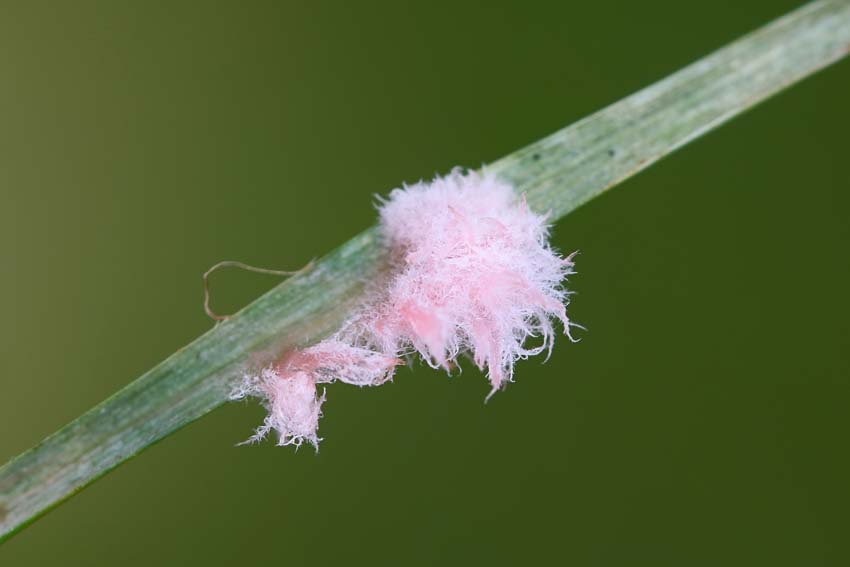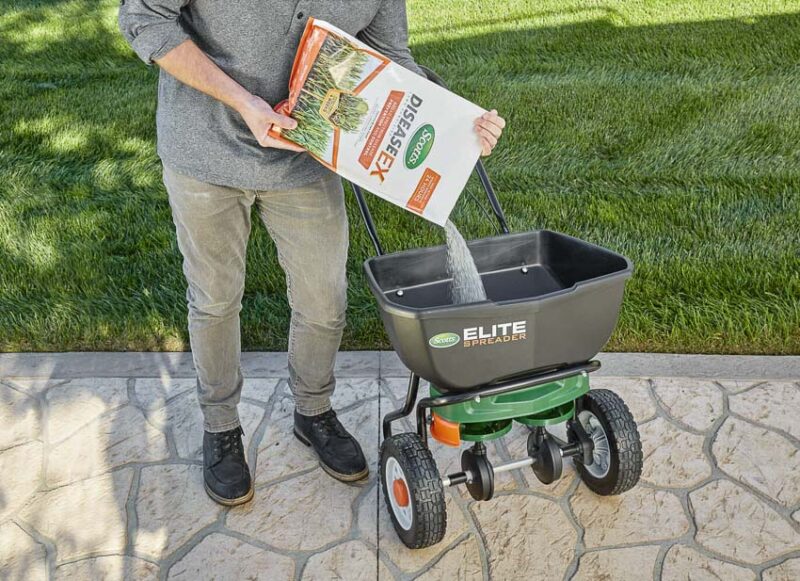Fungal infections on your lawn are common, but they can cause a lot of damage and won’t go away on their own. Learn how to get rid of grass fungus through identification, common causes, and effective treatments.
Identifying Grass Fungus
If you’ve done your lawn maintenance homework, you’ve probably heard a lot about how certain lawn care practices can spread diseases if you aren’t careful. In the lawn care industry, everywhere you look, there are admonitions to wash your tools, bag your grass clippings, and avoid watering at night.
It’s more helpful to talk about avoiding grass fungi while learning how to identify them. Explore the common signs of grass fungus and the most common types you’re likely to encounter in your lawn.
Common Signs of Grass Fungus
How do you know if your lawn has a grass fungus that you need to get rid of? Learn how to treat grass fungus by recognizing the common signs.
So, what does grass fungus look like? If your lawn suffers from any of the following symptoms, it could be grass fungus, causing it to look unhealthy.
- Grass that has turned yellow, brown, or tan
- Discolored patches that don’t respond to watering
- Large circles or rings of dead grass
- Small bleached spots with dark rings on blades of grass
- Withering, blackened blades of grass
- Red spores that show up on tools and mowers
Types of Grass Fungus
You don’t need to be an expert in fungi to be able to identify a problem with your lawn, but there are many different types of grass fungus, and identification may require some research.
Brown Patch Fungus
(Rhizoctonia solani)
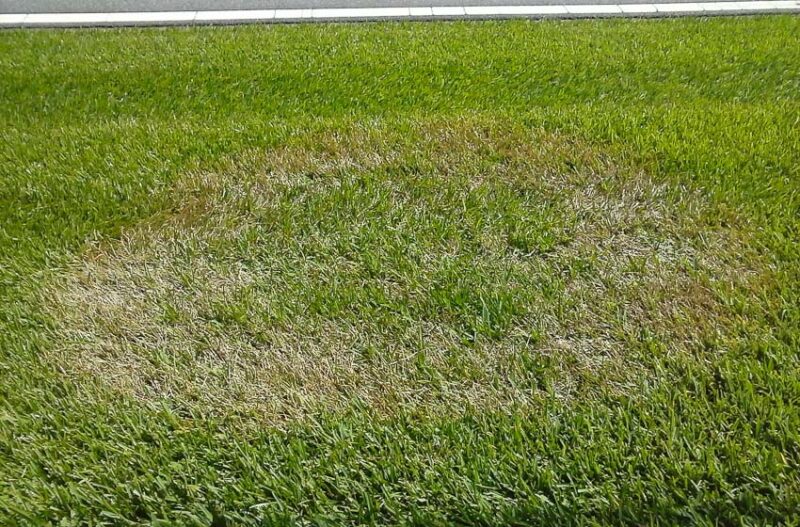
Brown patch fungus is the most common turf disease. It attacks all types of grasses all over the world. This grass fungus, also known as large patch disease, commonly occurs in mid to late summer and thrives in hot, humid conditions.
Brown patch fungus starts out as an oval or circular yellow discoloration on your lawn. The blades of the grass start to rot and turn yellow after the fungus infects them.
Unchecked, brown patch fungus will continue to spread across your lawn, turning your grass from green to yellowish-orange to tan. Unfortunately, the damage has already been done once you identify brown patch fungus in your lawn.
You can treat your lawn to prevent the spread, but you’ll have to wait for it to grow back to return to its former glory. Because brown patch fungus can be present in the soil for years, if you have had it in the past, it’s important to treat your lawn annually to prevent infection.
Dollar Spot Fungus
(Sclerotinia homoeocarpa)
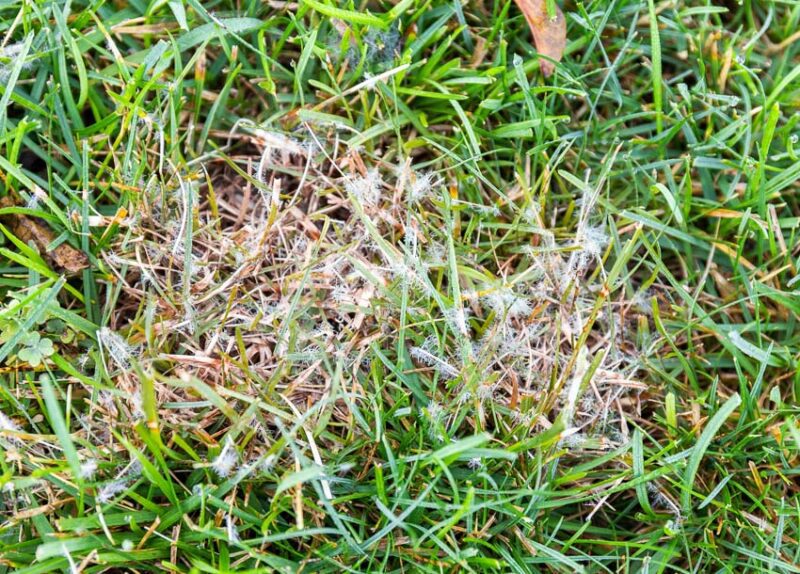
Dollar spot fungus is another widespread grass disease that you have to get rid of. It thrives in the spring and fall and passes from one season to the next through infected grass in your lawn. This fungus often infects new grass tissue through cuts in the leaf tips and spreads more quickly with long periods of moisture.
Dollar spot fungus presents as small dead patches up to 6 inches in diameter. Eventually, as it spreads, it will infect and kill entire patches of lawn.
Lawns grown on poorly fertilized soils are the most susceptible to dollar spot fungus. Mild temperatures and excess moisture contribute to the spread, and it’s easily made worse by poor lawn practices like overwatering.
Applying a fungicide will help curb the growth of dollar spot fungus, but to address the cause of the problem, which is infertile soil, you can fertilize your lawn or topdress it with compost and avoid overwatering.
Rust Fungus
Many pathogenic fungi cause rust diseases in lawns, including thousands of species in over 160 genera. So, it may be hard to identify the exact cause of the rust-colored spores floating around your yard.
Typically, rust fungus starts out as yellowish specks on blades of grass that develop reddish-orange spores. Lawns affected by rust fungi weaken and thin, and you’ll start to find the red spores on everything from your shoes to your lawn equipment.
Like other lawn diseases, conditions must be favorable for rust fungi to grow. Lawn rust disease is more common on grass weakened by summer droughts, and it spreads via tools, shoes, air, and mowing equipment.
Understanding Grass Fungus
Knowing how to identify and get rid of different types of grass fungus is critical for the health of your lawn, and identification can be difficult because there are many common types from different families. They cause similar damage to lawns, and many have matching causes.
What is Grass Fungus?
Grass fungi are naturally occurring species that help break down decaying organic matter, like lawn thatch and dead leaves in your yard. They can be helpful in many ways, but some grass fungi cause diseases that harm your grass.
Causes of Grass Fungus
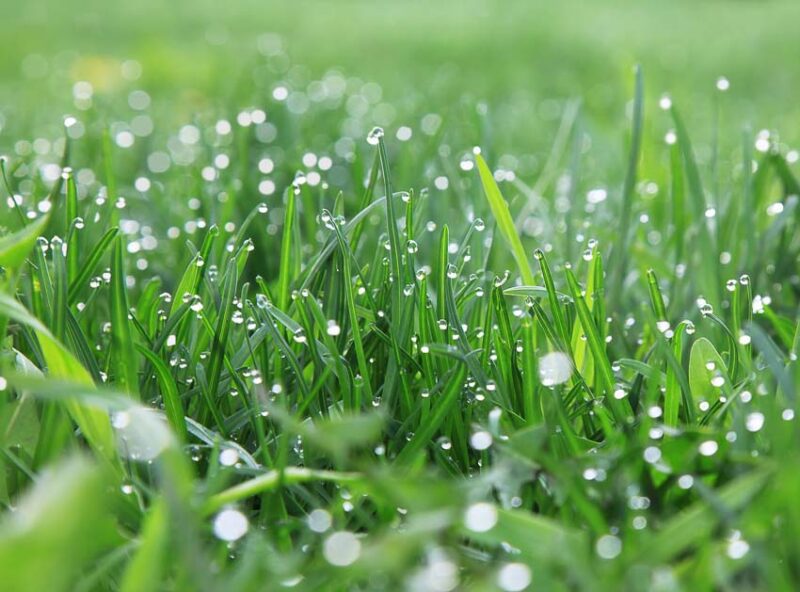
The soil in your lawn contains many species of grass fungi, and they are just waiting for the right conditions to present themselves. They are spread by wind, foot traffic, and lawn mowing equipment; there’s no way to avoid them altogether.
Here are some of the conditions that lead to grass fungal infections on your lawn:
- High amounts of moisture for extended periods
- Poor air circulation
- Excess thatch
- Inadequate fertilization
- Too much shade
- Soil compaction
Lawn treatments are generally only effective if you also address what causes grass fungus.
Effective Treatment of Grass Fungus
Learn how to get rid of fungus in grass with these effective treatment methods.
Proper Lawn Care Practices
Practicing good lawn care routines, including regular watering, fertilizing, and mowing, is always important. These practices become even more critical if your lawn develops a fungal infection.
You may have to change some of your routines to treat your lawn effectively. Consider the causes of grass fungus and avoid creating those conditions.
Cleaning your mowing equipment will help prevent the spread of lawn diseases. Another way to keep from infecting other parts of your lawn is to bag your grass clippings instead of mulching them.
Fungicide Application
Grass fungus will not go away on its own. Left untreated, it will continue to spread and cause damage to your lawn.
Fungicide is either applied as a preventive measure or as a curative method. Some grass fungus, like Dollar Spot, are best treated with both nitrogen and fungicide applications to knock it back and address the root cause of the disease.
Fungicides can be applied in liquid or granular form, and the best time to apply them is in the spring or early summer before they spread and cause damage to your lawn. You can also experiment with natural fungicides, including vinegar and neem oil.
Aeration and Dethatching
Improving air circulation is part of keeping your lawn healthy so you can avoid diseases caused by grass fungus. Aerating and dethatching a lawn are two ways to increase air circulation and improve soil drainage.
Your grass needs oxygen to thrive, so increased circulation will help promote lush, disease-resistant growth. Fungus likes to grow in still, damp environments, so anything you can do, including using your leaf blower to dry off your lawn in the morning, will help combat lawn fungal growth.
Reseeding and Renovation
Once grass fungi damage your lawn, there’s no turning back the clock. The damage is done, and unless you address the dead spots in your lawn, opportunistic weeds like dandelion and crabgrass will take advantage of the situation.
Revitalizing your lawn is easy if you only have a few bare spots. Simply remove the dead vegetation and scarify the soil surface. Add some store-bought or homemade compost and plant grass seed.
The best time to renovate your lawn is during peak growing conditions, like the summer or fall. If you have large sections of damaged turf, consider hydroseeding your lawn to bring it back to life.
Shopping for compost? Let OPE Reviews help you with our tips on what to look for when buying compost.
How to Prevent Grass Fungus
Avoid having to get rid of grass fungus by preventing it in the first place. For example, develop proper lawn watering techniques and basic lawn care routines. Since many types of diseases are worsened by poor soil fertility, using a balanced lawn fertilization schedule is also important.
Proper Watering Techniques
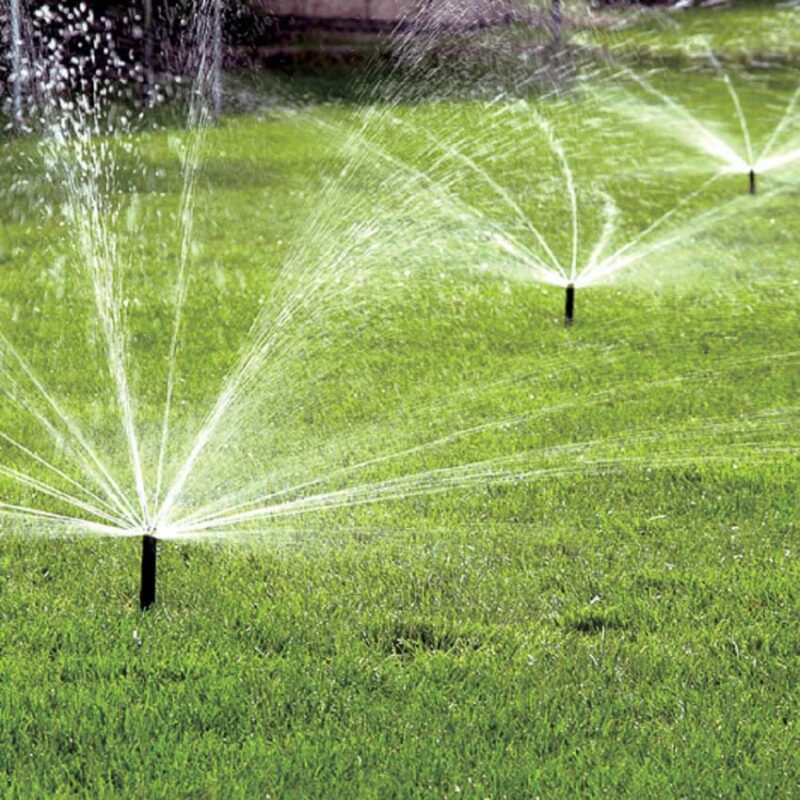
Overwatering is one of the most common causes of lawn fungal growth. It’s estimated that most lawns are overwatered by about 30% to 300%. Overwatering inflates your water bill and can harm the environment by causing erosion and carrying soil and contaminants into stormwater drainage systems.
Protect your lawn and the environment. Explore our guide on how to control erosion.
Drowning your lawn isn’t good for it in numerous ways, and proper watering techniques are one of the best ways to bring your lawn back to good health. The best time to water grass is in the morning so it can air out before nightfall.
Most lawns only need 1 to 1.5 inches of water per week, spread out over a couple of waterings. You can use a rain gauge to make sure you’re not overwatering. Installing a sprinkler system is another effective way to water your lawn without overdoing it and will help save money on your water bill.
Good Lawn Maintenance
Good lawn maintenance routines are an effective way to prevent most lawn diseases and problems. Best practices include the following routine chores:
- Mowing
- Fertilizing
- Watering
- Aerating
- Dethatching
- Liming your lawn
- Soil testing
- Overseeding
Understanding how to care for your lawn requires extensive knowledge about a wide variety of practices.
Balanced Fertilization
One of homeowners’ biggest challenges when caring for lawns is the fertilization schedule. Underfertilized lawns constitute a significant factor contributing to grass fungus, but it’s also easy to overfertilize your lawn, which can damage your grass and be a waste of money.
Grasping how to use lawn fertilizer seems complicated because there are a lot of choices. You can use synthetic or organic fertilizers or weed and feed fertilizers. There are also slow-release and quick-release fertilizers, so you must do your homework.
Learn more about how to fertilize your lawn and put your lawn on a fertilizer schedule. Often, homeowners pay lawn care professionals to handle these tasks so they don’t have to worry about when to do it and what product to use.
FAQ: Common Questions About How to Get Rid of Grass Fungus
1. Can I use natural remedies to treat grass fungus?
There are several ways to treat grass fungus naturally. Vinegar is one of the most popular methods, and it’s a good remedy for many other problems, including getting rid of gophers, snakes, fleas, and ticks. High-strength vinegar solutions are also effective weed and grass killers, so be sure to treat infected areas with a light solution, and don’t spray them over your entire lawn.
2. Will grass fungus come back after treatment?
Fungus spores can remain in the soil and reinfect your grass when the conditions are right. If you’ve had a grass fungus on your lawn in the past, it’s a good idea to treat your lawn annually with a fungicide to prevent infections. Continue to use best lawn care practices to avoid creating conditions that encourage fungal growth.
3. Can I treat grass fungus myself, or should I hire a professional?
Many people can successfully treat grass fungus infections, but hiring a professional is a good choice if you’re not confident or you have a severe infection. There are two types of grass fungus treatment, including preventive and curative methods, and a lawn care professional has the experience to treat severe infections successfully.
4. Is letting pets and children on the lawn safe after applying fungicides?
It’s always best to keep children and pets off your lawn for at least 72 hours after treating it with any type of chemical, including fungicides. You also need to keep concentrated products out of the reach of pets and children to avoid accidental poisonings.
5. How quickly will I see results after treating grass fungus?
Lawn fungicides take about a week to start working, but they can’t reverse the damage already done. If your grass died from fungal infections, you may have bare spots that need reseeding. Use seed to patch your lawn, and continue to practice good yard care. Your grass should bounce back quickly.

